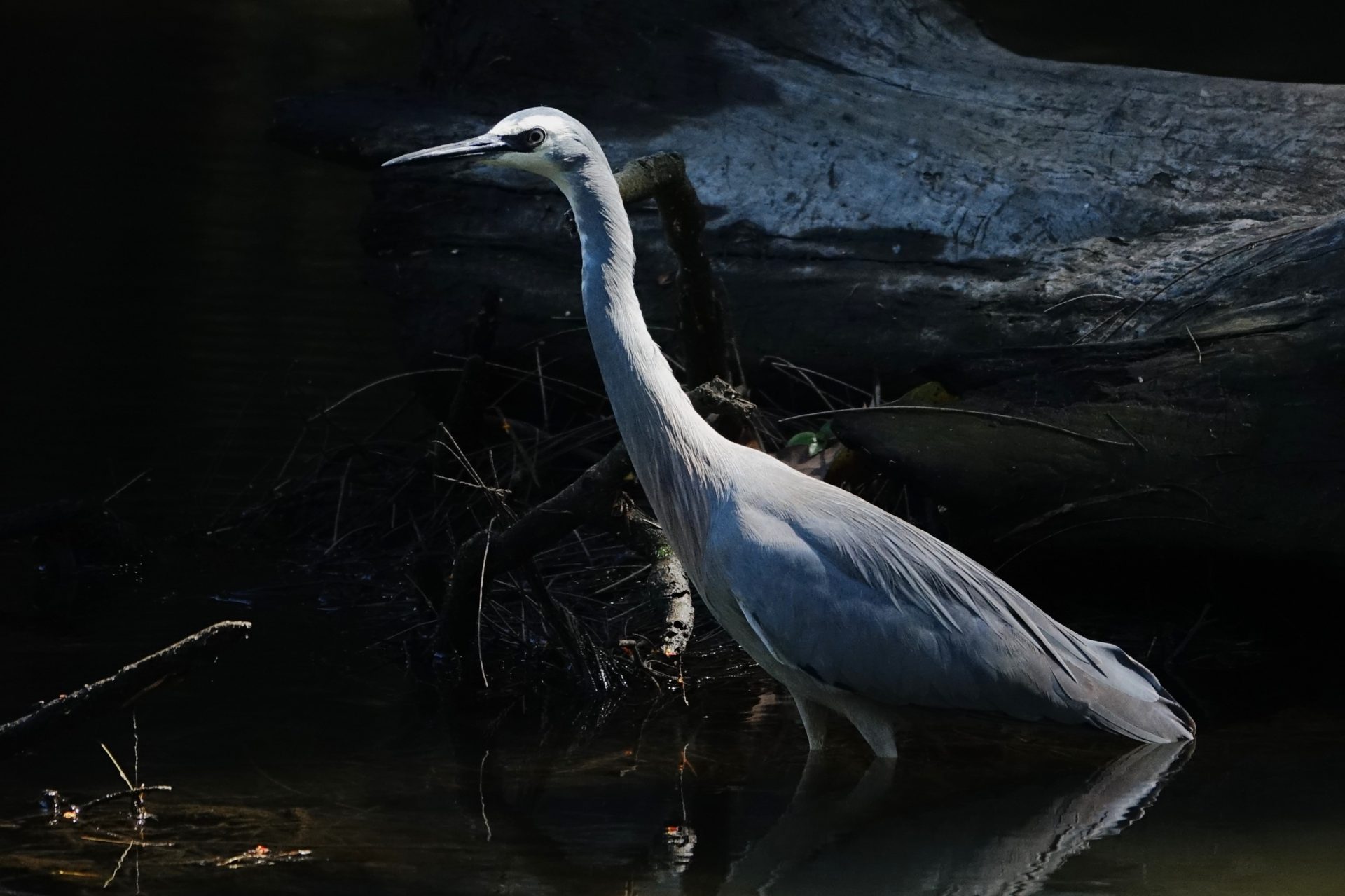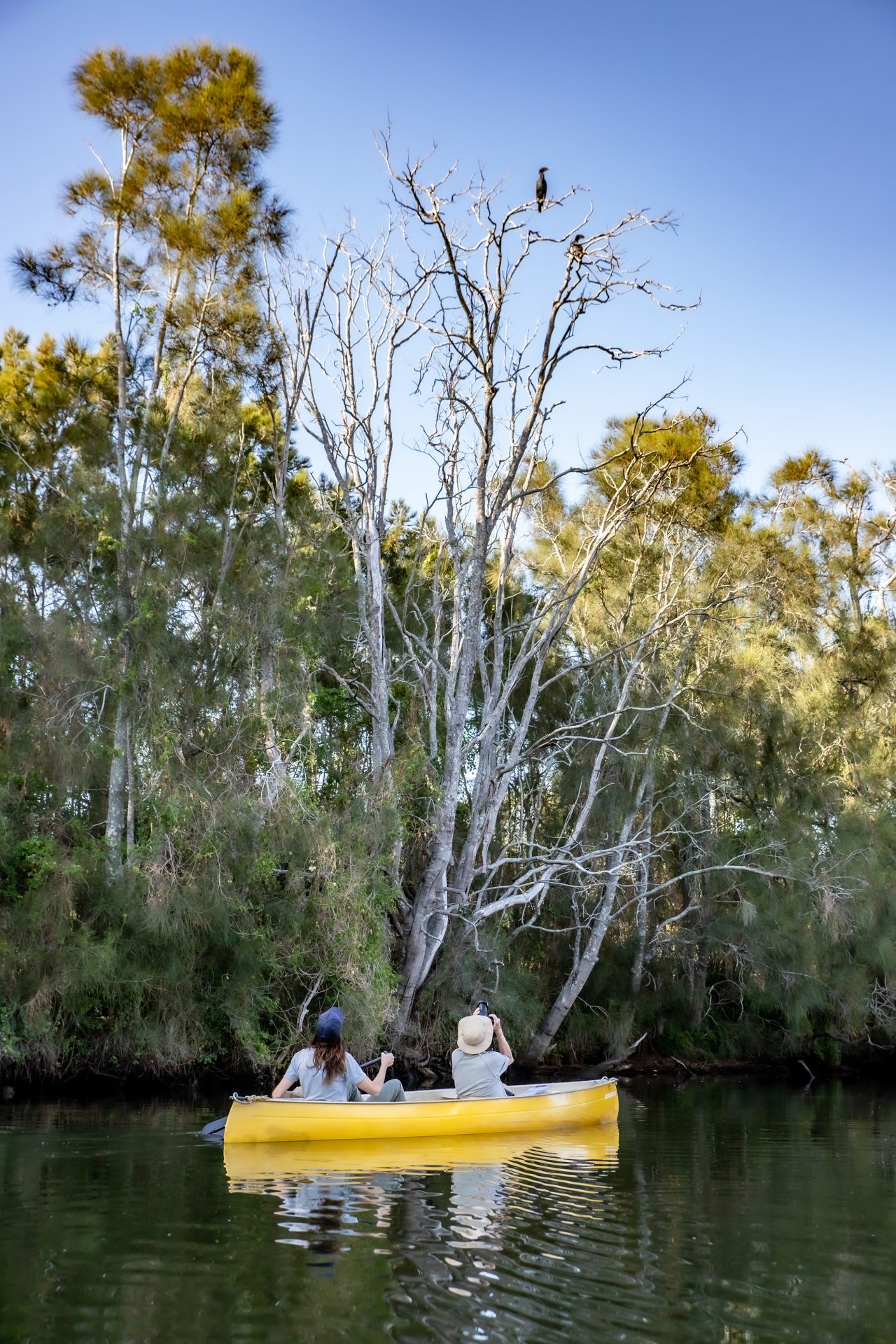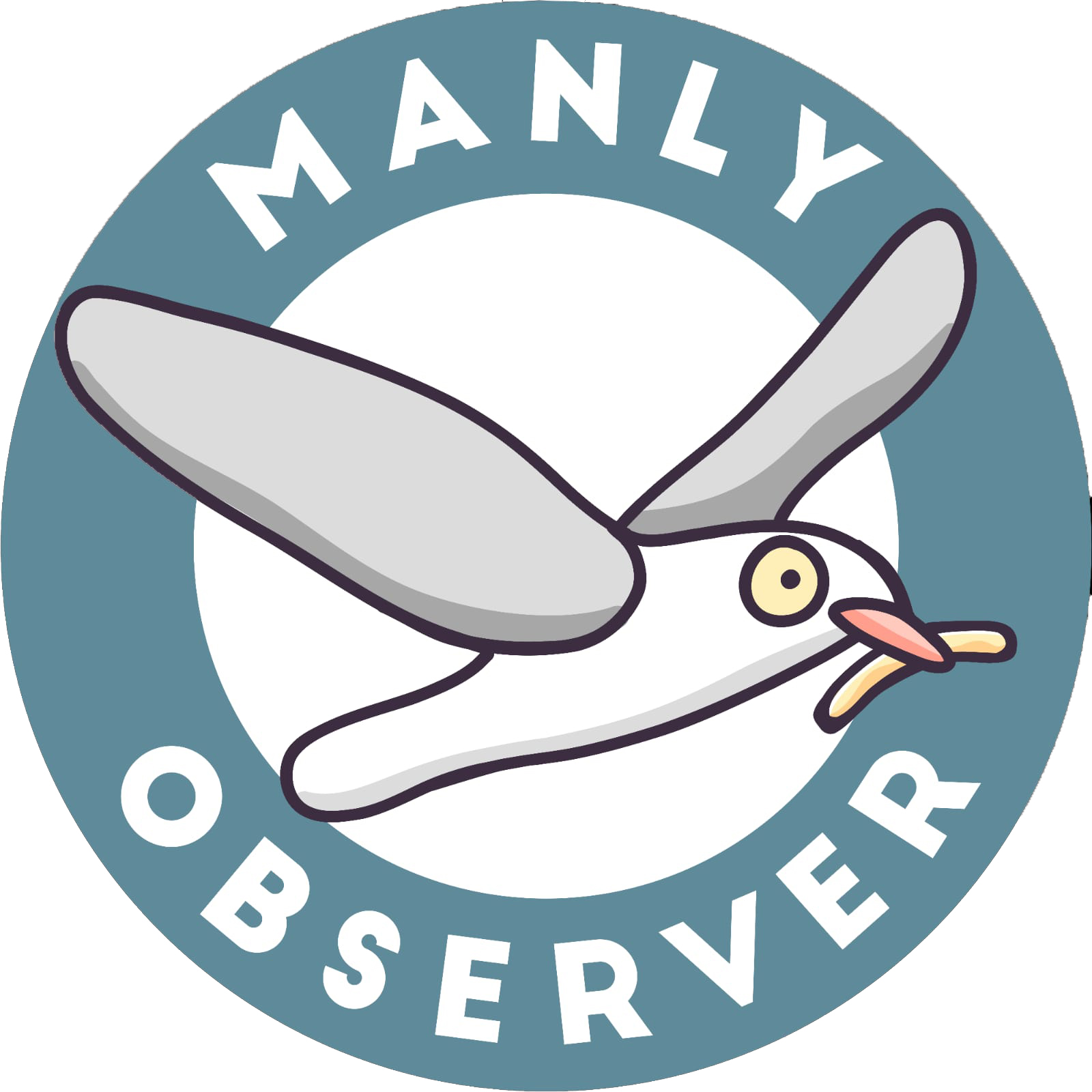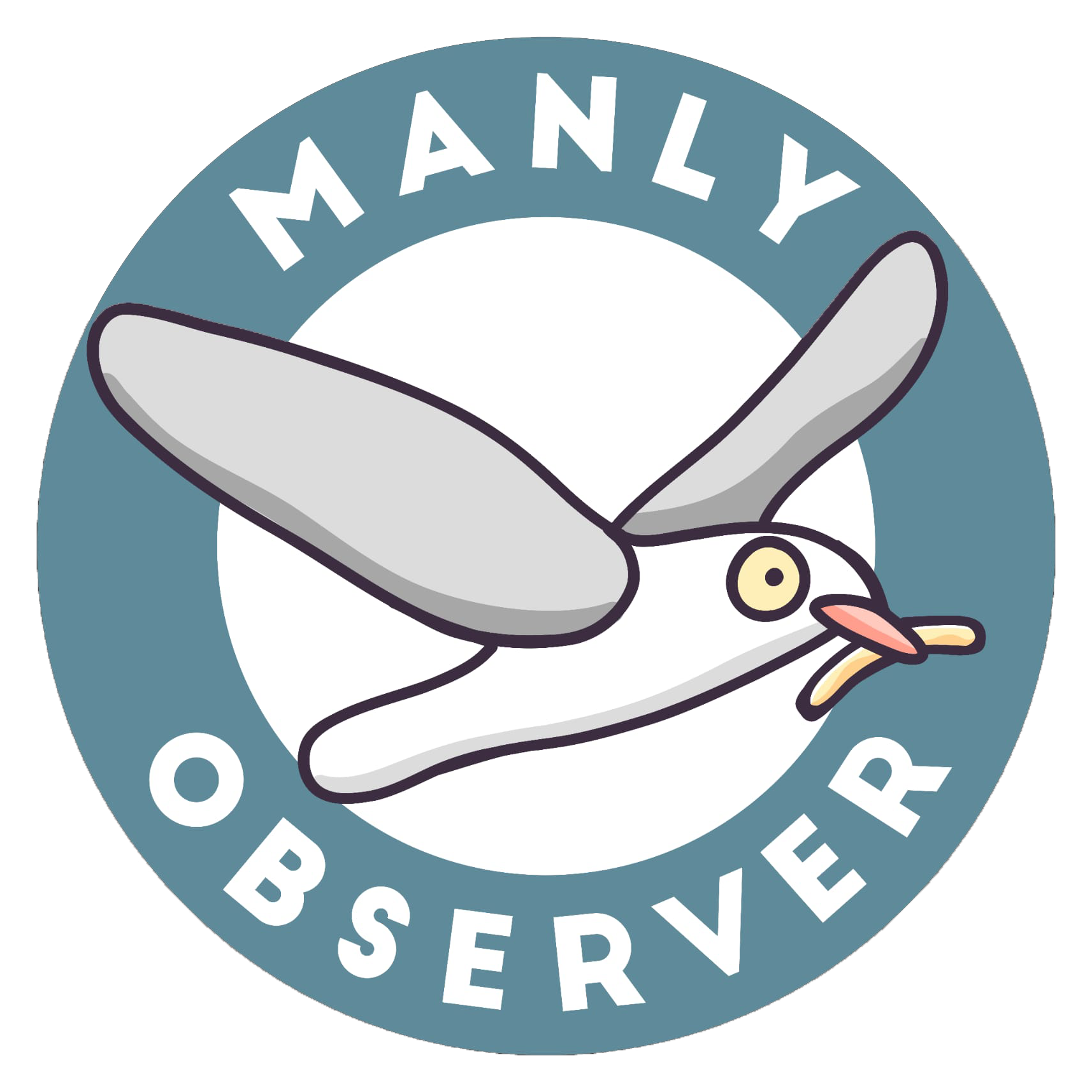On Friday morning, 19 January, Manly Lagoon Friends undertake their monthly survey of the birds nesting around this tidal estuary.
Manly Lagoon Friends is a community organisation dedicated to conserving and enhancing the coastal environment around Manly Lagoon, whilst educating people on the importance of this unique habitat.
The group advocate for the “protection, preservation, regeneration and sustainable management” of the lagoon wetlands, which include three inflowing streams – Brookvale Creek, Burnt Bridge Creek and Manly Creek – and the intermittently closed tidal channel at Queenscliff Beach.
Manly Lagoon is an ICOLL – Intermittently Closed and Open Lakes and Lagoons – bodies of water separated from the ocean by a sandbar. The barrier is frequently but irregularly washed away by an accumulation of water in the reservoir, scouring a channel, and then eventually redeposited by the incoming sea. During the interim, the lagoon is regularly flushed by the movement of tides entering through the channel.
Waterbird watchers
Manly Lagoon Friends, whose logo is a royal spoonbill, undertake a routine survey of the waterbirds nesting and feeding around the tidal inlet, which has been a monthly event since August 2019 (conducted on the third Friday of every month from 7.30am).
On a sunny spring day, Manly Observer joined Russell, Melanie and Tom for their bird count. This involved gliding along the water in canoes and kayaks with a score sheet to observe the avian life in the trees and along the banks.

Tom revealed, “The Manly Lagoon survey is unique in that much of it is undertaken from canoe, whereby close observation of roosting birds and those feeding along the banks can be more clearly observed.
“Apart from universities and research scientists, we don’t know of any other community group that does it.”
Tom explained, “The advantage of surveying from the water is the birds don’t take any notice of you when you paddle past; it’s like they think, ‘oh, it’s a big fish!’ Basically, you can get right up close and see them. Otherwise, the nests are difficult to see from the shore, because they’re mainly orientated towards the water.”
He continued, “However, with baby darters and cormorants you’ve got to be careful, because they’ve never seen a yellow canoe in their life before and you can spook them and they fall off. And at that stage in their development they go straight to the bottom.
“There’s no oil in their feathers, they’ve not fully developed, so they just sink straight down. And it’s distressing when that happens, so we’re very careful. But, generally, supervised observations from a canoe are fine.”

The wetlands are divided into two zones, A and B.
Zone B encompasses the upper reaches of the lagoon, around the sports fields of Passmore and Nolan’s reserves and where the three creeks feed in fresh water.
Zone A covers the region from the catchment area on the edge of Keirle Park, immediately west of Pittwater Rd Bridge, downstream to Queenscliff Bridge.
Dogs in the space
This means Zone A includes the dog off-leash area along Lagoon Reserve?
“Yes, basically around Queenscliff,” Melanie confirmed, “towards the beach, where all the dogs are and around where the circuses set up at Hinkler Park.”
“And the leashed area that dog owners don’t take any notice of,” Russell added.
Does the presence of dogs – especially unleashed ones – affect the birdlife around the lagoon?
“COVID increased the amount of dogs and the amount of dog walking,” Tom elaborated, “because flexible working hours increased the frequency of people taking out dogs along with the coffee culture of meeting at the park. So, in the last four years we’ve seen dramatic changes and the number of birds in Zone A has dropped – because the dogs are having a great time running around and frightening them.”

Are there waterbirds that were prevalent but no longer appear in the monthly survey?
“Purple swamp hens,” Tom considered. “Constant numbers were present until about 2014, but only the odd sighting since. “Black bitterns, an endangered species, were often seen on the lagoon, however they’ve never been positively sighted in my experience. There is some confusion with the similar-looking striated heron, which is a regular along the lagoon.”
Counting the beaks
What species of birds are currently nesting around Manly Lagoon?
Tom listed the avian diversity among the reeds and in the trees. “In casuarinas along Manly Golf Course and at end of Riverview Parade: darters; little pied cormorants; little black cormorants; and great cormorants. We’ve also seen some nesting of white faced herons in the tall trees of Lagoon Park in the past.

“In the wetlands around Manly Golf Course and sometimes in riparian zones: Pacific black ducks; chestnut teals; grey teals; wood ducks; and dusky moor hens.”
A riparian zone is the vegetation in the interface between land and a natural water course, including riverbanks, marshes and mangroves.
“Some of the houses grow their lawns right to the edge of the lagoon,” Melanie said. “That was also the case with Nolan’s Reserve, but Tom’s bush regeneration has created a lovely, thick, lush riparian zone – a fabulous habitat full of weeds.”
“We’ve been bush regenerating since about 2005,” Tom confirmed, “up at Nolan’s and Passmore reserves, where before the maintenance guys used to mow right to the edge of the lagoon.”
“Now one bird,” Melanie exclaimed, “which we’ve not seen for some time – the purple swamp hen – has returned!”

Are there waterbirds that vanished from the lagoon and are now making a comeback?
“Eurasian Coots made their first appearance in about 2018, and are now seen regularly,” Tom said. “Buff banded rails made their first appearance in about 2008, due to the development of riparian zone vegetation, and are now seen regularly around the lagoon and in Manly Golf Course.”
How many birds might they expect to count in their monthly survey?
“Of the 29 birds that are regularly here, we’d see between 10 and 18 in any one survey,” Tom revealed. “It’s dependent on the weather, how soon we get up in the morning, average monthly rainfall, the season, and any number of additional disturbances – those sorts of things.
“Also, if there’s been a lot of rain out west, many birds will fly east to the coast, which means more coming to the lagoon. At other times the coastal birds head inland for opportunities there.”

Migratory mystery
Many of these waterbirds aren’t natural flyers, and instead travel by short hops or wading. However, here’s a mystery: the Friends’ survey might count 50 coots one month and then nothing over the following months while the flock relocates inland, and then after a period, the birds return.
Coots are long-toed birds evolved for treading on soft surfaces around shallow lakes, but with short wings they make weak flyers.
How do these birds, with limited flying abilities, manage to relocate inland, or even know that there are seasonal attractions elsewhere (from breeding to feeding) if they can’t undertake surveillance flights?
“Good question!” Russell replied.
“We have no idea,” Tom added.
“They’ve got to communicate with other birds, surely there’s a communication?” Melanie considered.
“It’s a great mystery of their biology,” Russell concluded.
“I think they look up and they see other birds, like pelicans, flying west,” Tom reasoned. “Perhaps they think, ‘oh, shoot, the pelicans are going west, we’d better go west too,’ that sort of thing! But I don’t know who tells the pelicans! Either that or the cloud movements, we don’t actually know.”

“We don’t get migratory water birds around Manly Lagoon,” Russell explained, “but we get some migratory bush birds – like we saw at least 10 channel bill cuckoos in the latest survey. However, we don’t count them. We only focus on birds that utilise the lagoon and the water, because they’re predictable and always in the one spot.”
Inspiration and outcome
What influenced the decision to conduct the monthly bird count?
“I had been long calling for a bird survey as an indicator of lagoon health,” Tom explained, “and focus on this overlooked feature of the lagoon. I felt that baseline data on waterbird numbers should be established prior to an extensive redesign of Manly Golf Course, which incorporated extensive native planting and the establishment of wetlands within the course.”
Works began on an extensive remodelling of Manly Golf Course in September 2009, which was undertaken by Victorian golf course designers Thomson Perrett, renowned for their respect for the environment.
Tom continued, “I was unable to get either Manly or Warringah Councils to take up this activity so unfortunately this baseline data opportunity was missed.
“I was then encouraged by the Manly Environment Centre (MEC) to just do it myself, along the lines of a survey that was being taken by the Curl Curl Lagoon Friends.”
Russell, who is also involved in Curl Curl Lagoon Friends and their monthly waterbird count, revealed, “The big difference between Manly and Curl Curl is that Manly has nesting cormorants and darters. Curl Curl has no birds nesting at all in trees.”

What do you do with the information collated in the survey?
“Information is forwarded to Council each survey,” Tom said. “We maintain a master record of all our surveys, which is compared year by year. Trends are noted and reasons for changes put forward in an annual report to Council, the Lagoon Friends and others.
“Presentations are also given to the community, and environmental and school groups, as a way to highlight the importance of the lagoon and the richness of its waterbird population.”
Anything to add?
“The public can get involved by joining in the monthly survey or learning about the waterbirds of Manly Lagoon,” Tom said. “It is hoped that information, by way of signage boards, can be put up around the lagoon at suitable places. And that Council, golf courses and the residents and community can be encouraged to preserve and enhance the general habitat for water birds around the lagoon.”
Manly Lagoon Friends
Webpage: https://www.manlylagoonfriends.org/
Instagram: https://www.instagram.com/manlylagoonfriendsorg/?hl=en
Facebook: https://www.facebook.com/people/manlylagoonfriendsorg/100083405377339/



